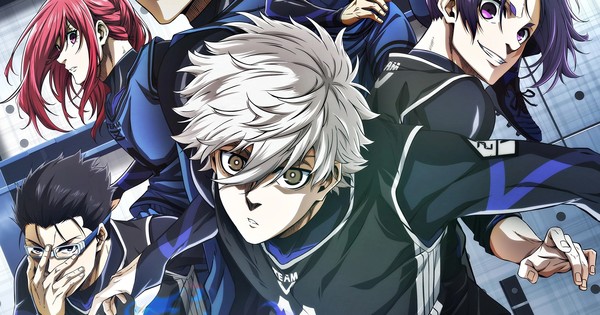Movie Reviews
Documentary Review: Until I Fly (2024) by Kanishka Sonthalia and Siddesh Shetty

“I was born here, so why should I
feel like I belong somewhere else?”
India and Nepal have an open border where Indians and Nepalese can travel and work across the border without visas. However, due to the uncertain economic and political situation, Nepalese living in India face racial discrimination. Kanishka Sonthalia and Siddesh Shetty, in their documentary feature debut, highlight this phenomenon by focusing on five transformative years in the live of Veeru, a young boy who endures relentless bullying and discrimination in the village he lives with his visual impaired mother and his older brother Vijay.
The documentary begins in rather dramatic fashion, showing how both mother and son, but particularly Veeru are being bullied in the village, with the way other kids his age perceive the boy as Nepalese, and therefore a thief in their mind, echoing rather impactfully about the issues the two of them have to face. That the verbal abuse occasionally becomes physical in school adds an even more dramatic aspect to the documentary, and one can only wonder how the directors managed to stay away and not help the boy, particularly when he was being ganged up on.
In that setting, and with Veenu feeling even worse and more helpless when he witnesses his mother also face ridicule, it comes as no surprise that the boy chooses to “escape” initially in his own brain, coming up with a story about gods and demons, and nature, where he dreams of befriending birds. This aspect is quite impressively captured, as Siddesh Setty, who also doubles as DP, manages to portray this imaginary world without stripping the documentary of its realism, in one of the best aspects of the movie.
Furthermore, and as it actually happens on many occasions, finally sports provide an actual solace for Veeru, who eventually becomes part of a kabaddi team formed in school, as soon as the sport is introduced there, with his former “enemies” turning into teammates, and him finally becoming part of the “inner group”. The last part of the documentary follows the exploits of the team, thus ending the whole thing in a positive note that also highlights the value of sports as a medium against racism.
At the same time though, and if one looks at the story in a wider prism, the issues with emigration and the racism that results from it are highlighted quite eloquently, along with a comment that problems like that become even more significant in small societies, where one can definitely not ‘hide in the crowd’. As such, the movie is induced with a more universal essence, which definitely helps raise the quality of its context.
And to go back to the cinematography once more, Setty’s work is excellent throughout the movie, with the presentation of the area, and the disaster that befalls it at some point being impressive, with the long and panoramic shots in particular definitely staying on mind. Audrey Maurion’s editing connects the different aspects of the film (mother talking, Veeru talking, the family’s interactions and the school environment) nicely, inducing the movie with a very appealing sense of speed that makes its 91 minutes pass rather quickly.
“Until I Fly” is an excellent documentary that manages to present a problem eloquently while also putting it under a wider prism, and also giving a glimpse of hope with its ending, thus avoiding making a rather pessimistic comment, without losing its overall sense of realism.

Movie Reviews
BLUELOCK THE MOVIE -EPISODE NAGI- Anime Film Review

BLUELOCK THE MOVIE -EPISODE NAGI- is a retelling of the early events of BLUELOCK through the eyes of Nagi and Mikage. However, that’s not to say this is a recap or compilation film. Rather, a good 70% of the film is newly animated footage as the story follows their first meeting, their growing friendship, and the first few trials of the Blue Lock competition.
It is these additions to the story that are the most interesting. Not only do we get to see a completely different version of the soccer tag game that starts things off, but we also see how Nagi and Mikage deal with the other teams we saw Isagi and his friends confront in the early part of the TV series.
Of course, the real meat of the story is centered around the titular Nagi. We spend most of the film in his head—hearing his internal struggle to understand his opponents and himself. This allows us to see that his growth as a character isn’t the light switch flip it seems to be in the main anime but is instead a gradual process that culminates in his game with Isagi (and the choices he makes after).
Throughout the film, Nagi goes from being perpetually bored to not being bored when he’s with Mikage to caring about soccer after clashing with Isagi. This vastly improves his character by making him far more nuanced and understandable—which is important given how prominent he becomes in the series overall.
Mostly, BLUELOCK THE MOVIE -EPISODE NAGI- works as a standalone film. While knowing the rules of the various challenges within Blue Lock and how Isagi dealt with them adds an extra layer to the story, the focus on Nagi makes the film watchable even without that information.
…And then comes the last 10 minutes of the film.
This film’s climax is when Nagi must choose between Isagi and Mikage. Everything in the film builds to this choice. Thus, the logical conclusion point for the film is right after Nagi makes it. However, instead of doing this, the film becomes a montage cramming 12 episodes of action into 10 minutes. It’s visual chaos. It’s impossible to follow what goes on, and even the key moments with Nagi and Mikage from the series’ back half are almost completely cut. Or, to put it another way, this film would be far better if it were 10 minutes shorter.
As for the presentation, the film looks great—as good as the TV anime in most places and better than it in others. Nagi’s flame and skull motif looks great, and the visuals, in general, show just how invested Nagi is at any given moment in what’s going on. Conversely, the music is largely forgettable, but it does its job well enough.
In the end, BLUELOCK THE MOVIE -EPISODE NAGI- is a great companion piece to the original BLUELOCK and a halfway-decent standalone film. It would be even better if it weren’t for its final minutes (and their unnecessary need to catch us up to the end of the first season of the TV anime). Still, BLUELOCK fans will enjoy this one, even if it stumbles a bit on the landing.
Movie Reviews
Challengers Movie Review

The opinions expressed in this article are the writer’s own and do not reflect the views of Her Campus.
This article is written by a student writer from the Her Campus at San Francisco chapter.
On Monday, April 22nd Regal Stonestown Galleria, just a few hundred feet away from SFSU, hosted an advanced screening of Challengers, one of the most highly anticipated movies of 2024. Directed by Luca Guadagnino and starring Josh O’ Connor, Mike Faist, and Zendaya – Challengers I can confidently say, lived up to its long awaited release.
The original release date for the film was September of 2023, but with the WGA/SAG-AFTRA strike, we got our first trailer in June of 2023 to then have to wait a grueling ten months for its release. I have already seen the film twice and cannot wait for it to hit streaming platforms and here are three things that I will not stop talking about.
Codependency: The Movie
Given the director’s candid remark, “I think those three characters in that movie are beautifully complex and really f*cked-up people that I love very much,” it couldn’t be a more fitting description for Art, Tashi, and Patrick. The audience has been divided by their love, understanding, or attraction to each character. However, after watching it for the second time, I’ve come to realize that these characters are indeed beautifully complex. They are all in pursuit of something they can only find in each other, which undeniably influences their actions. Therefore, when you find yourself torn between Team Art, Team Tashi, or Team Patrick, you might unconsciously be gravitating towards the character whose actions you find most tolerable. After my first viewing, I was 100% Team Art, but even at the time of writing this article I don’t know where my allegiance lies at this point.
Stellar Cinematography
Italian director Luca Guadagnino has solidified his status as a legend in the film industry, known for creating emotionally complex, sultry, and visually captivating works. Challengers, is no exception. As a cinema student, I was fascinated by cinematography. For those familiar with Guadagnino’s 2022 film Bones and All, starring Timothée Chalamet and Taylor Russell, you’ll notice striking similarities. The movie sports camera angles that bring you intimately close to the characters, almost as if you’re intruding on their personal space. There are intense shots that seem to place the camera on the tennis ball as it zips back and forth across the court. True to Guadagnino’s style, there are also moments where time seems to slow down amidst what would otherwise be fast-paced scenes.
Sexual Tension
This. Movie. Is. Sexy.
For a film that has absolutely zero sex scenes, there are moments in this film that will leave you feeling flushed and excited. As someone who’s never been a big sports fan, I now see tennis as the most intimate sport out there. I will keep this paragraph short but all I will say is that viewers will walk away from this film with a new love for short shorts, sweat, and they’ll never look at a churro the same way again.
Movie Reviews
High & Low – John Galliano Movie Review: A fascinating study of a fashion designer's fall from grace

The premise of Kevin Macdonald’s High & Low – John Galliano lends itself well to the documentary format, given that it charts the zenith and nadir of the career of a famous fashion designer. The highs are insane, and the lows plummet to profound depths. The first half of the film captures John Galliano’s rise from the boutiques of London to the haute couture scene in France. Two-three passages in the first half stand out, thanks to the nuggets of information Kevin presents. One is about how Galliano was inspired by Abel Gance’s silent film Napoléon to create an extravagant clothing style among the elite. During the French revolution, youngsters apparently resisted the trend of clothes without extravagant styling, and this film shows how Galliano channels this through his fashion, with the repeated use of Napoléon drumming in his influence on the fashion designer’s work.
Director: Kevin MacDonald
Cast: John Galliano, Charlize Theron, Penélope Cruz, Edward Enninful, Naomi Campbell
Streamer: Mubi
The other, more fascinating portion of the film’s first half is so typical of the Kevin Macdonald brand of storytelling. First, through a mix of voiceover and fashion footage, Kevin shows Galliano’s response to the abuse he faced in childhood for homosexual tendencies, and the resultant trauma. There is a portion about his father beating him for calling a young man “gorgeous.” Kevin juxtaposes this with a moment where Galliano, now a successful fashion designer, clad in a pink T-shirt that says “gorgeous,” walks the ramp with a couple of women. It is particularly provocative for the blink-and-you-miss-it way in which Kevin presents it, much like how he addresses Idi Amin’s meat-eater reputation in The Last King of Scotland. By this time, the film leaves you engrossed in its world-building, full of dramatic lighting that highlights the models and their garments, the clicking sound of cameras, and the energetic background music. For a good part, watching the film is like being on the front row of a fashion show, thanks mainly to the use of archive footage.
-

 Kentucky1 week ago
Kentucky1 week agoKentucky first lady visits Fort Knox schools in honor of Month of the Military Child
-
News1 week ago
Maryland high school student arrested after authorities discovered a 129-page document detailing school shooting plan, police say | CNN
-

 World1 week ago
World1 week agoIranian media says three drones downed after explosions heard in Isfahan
-

 World1 week ago
World1 week agoShipping firms plead for UN help amid escalating Middle East conflict
-

 Politics1 week ago
Politics1 week agoIsrael hits Iran with 'limited' strikes despite White House opposition
-

 Politics1 week ago
Politics1 week agoICE chief says this foreign adversary isn’t taking back its illegal immigrants
-

 News1 week ago
News1 week agoThe San Francisco Zoo will receive a pair of pandas from China
-

 Politics1 week ago
Politics1 week ago'Nothing more backwards' than US funding Ukraine border security but not our own, conservatives say
















